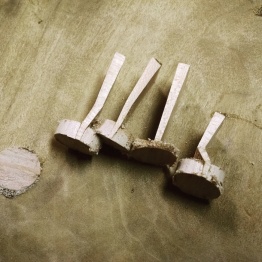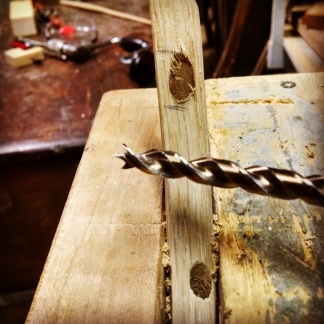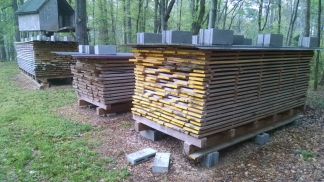In Part 1, I shared a brief description and some lessons learned from each of my past workshops. Today, we’ll explore a few of the exceptional workshops of fellow woodworkers that inspired and informed my own design. (Be sure to click the links for a more in-depth look than I offer here). One thing you might notice if you’re familiar with these folks: They’re all Windsor chairmakers. Though it wasn’t a conscious decision to focus on the shops of Windsor chairmakers, it will come as no surprise if you’ve followed my interests on this blog. These guys use the tools that I like to use, and they work in ways in which I like to work. They designed their shops to be efficient with hand tools (and they know a thing or two about aesthetics to boot).


Dimensions: 18′ x 36′ (648 sq.ft. on the ground floor, plus a loft and porch)
Construction: Timber frame, asphalt shingle roof, clapboard siding, wooden floors and wall paneling.
What I Like About It: Okay, let’s be honest. Greg’s shop is freaking gorgeous. Exposed post and beam construction, endless expanses of wood from floor to ceiling, windows on every wall. If I had unlimited time, this is the kind of shop that I would prefer to build. It’s a big, it’s inviting, and it’s finished out to a tremendous degree.
But… Greg uses the space to teach chairmaking workshops for several students at a time. It’s quite a bit more space than I can justify for the work that I do and the equipment that I use. And though the idea of a timber frame is appealing, I lack the tools and experience required to do an efficient job of timber framing. I’m completely on board with the wooden paneling and big windows, though.


Dimensions: 16′ x 20′ (320 sq.ft. on the ground floor, plus a loft and porch)
Construction: Timber frame, metal roof, board-and-batten siding, wooden floors and wall paneling.
What I Like About It: At less than half the size of Greg’s shop, this workshop is an appropriate size for a single woodworker – after all, it’s been the birthplace of Curtis’ phenomenal chairs for more than 20 years. It features wood floors and paneling and windows throughout. I especially like the well-used porch that wraps around two sides. A porch is the natural place to use a shavehorse, and it provides a lot of extra workspace for minimal effort. The unpainted exterior is attractive, unpretentious, and it saves time and money.
But… Curtis’ only power tools are a lathe and a bandsaw. I will be looking to house a few more electron hogs than he does, so a bit more space might be handy.


Dimensions: 18′ x 28′ (504 sq.ft. on the ground floor, plus upstairs)
Construction: Stick frame, metal roof, clapboard siding, wooden floors and wall paneling.
What I Like About It: Killer paint scheme. I would totally copy it, if it didn’t utterly clash with my green-and-tan house paint. Besides that, I love the big double doors for moving equipment in and out with ease and the triplet of north-facing windows above a massive workbench. Like the other two shops, the wall paneling and flooring is wood, and it has a loft for storage. The size is just about perfect. An under-appreciated design element that I really like is the generous roof overhang. In the balmy Deep South, where wood rots if you sneeze on it, adequate protection from the weather is critical if you intend to use wood siding.
But… I really want a porch on my shop. Besides that, this approaches my Platonic ideal.
______________________________________________
So there you have it. Those are the three workshops that were agitating my gray matter as I sat down to make plans for my workshop. From these shops, and from my own experiences, I made a list of, let’s call them “first principles” for my workshop design. I’ll cover them in the next installment.





















































































